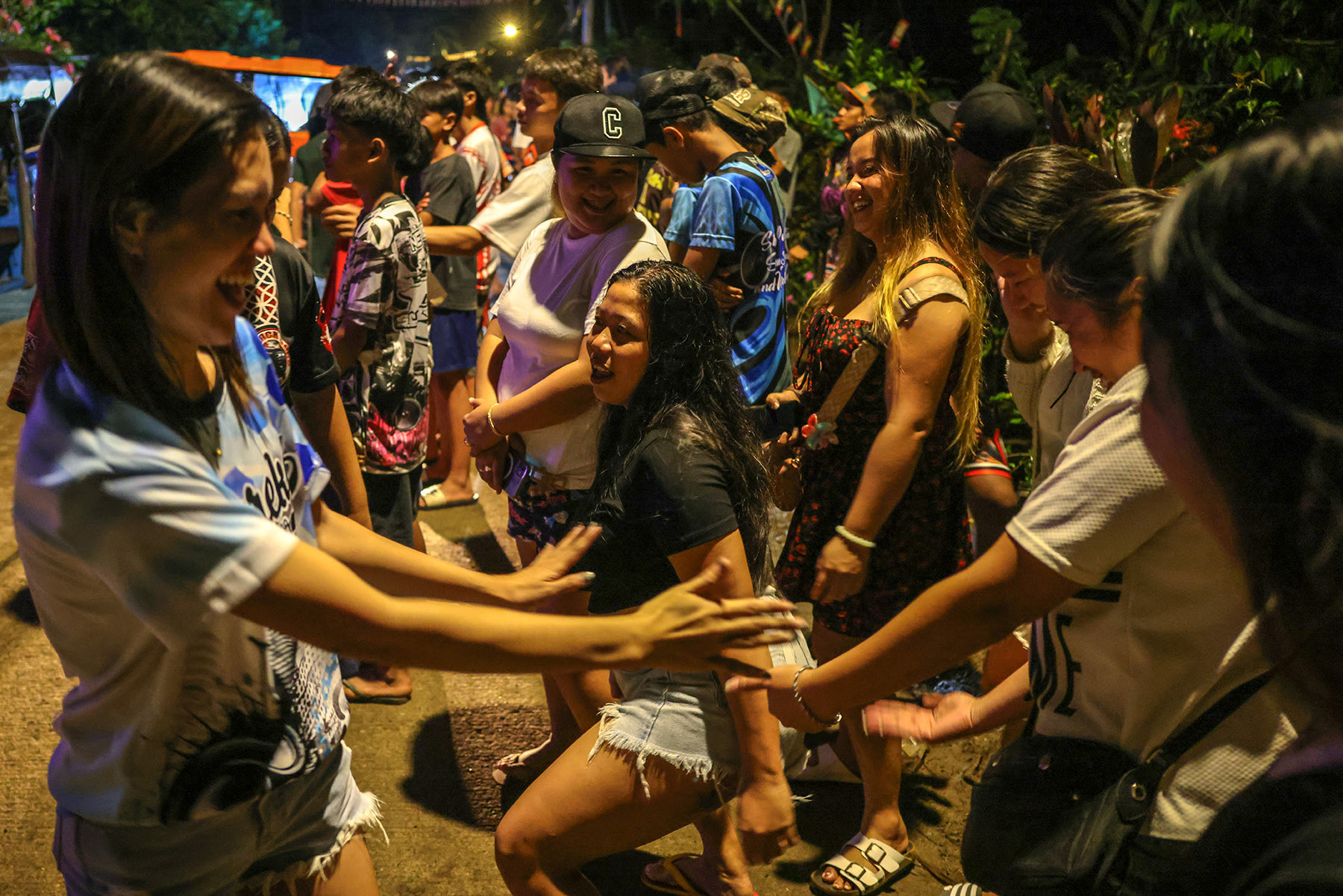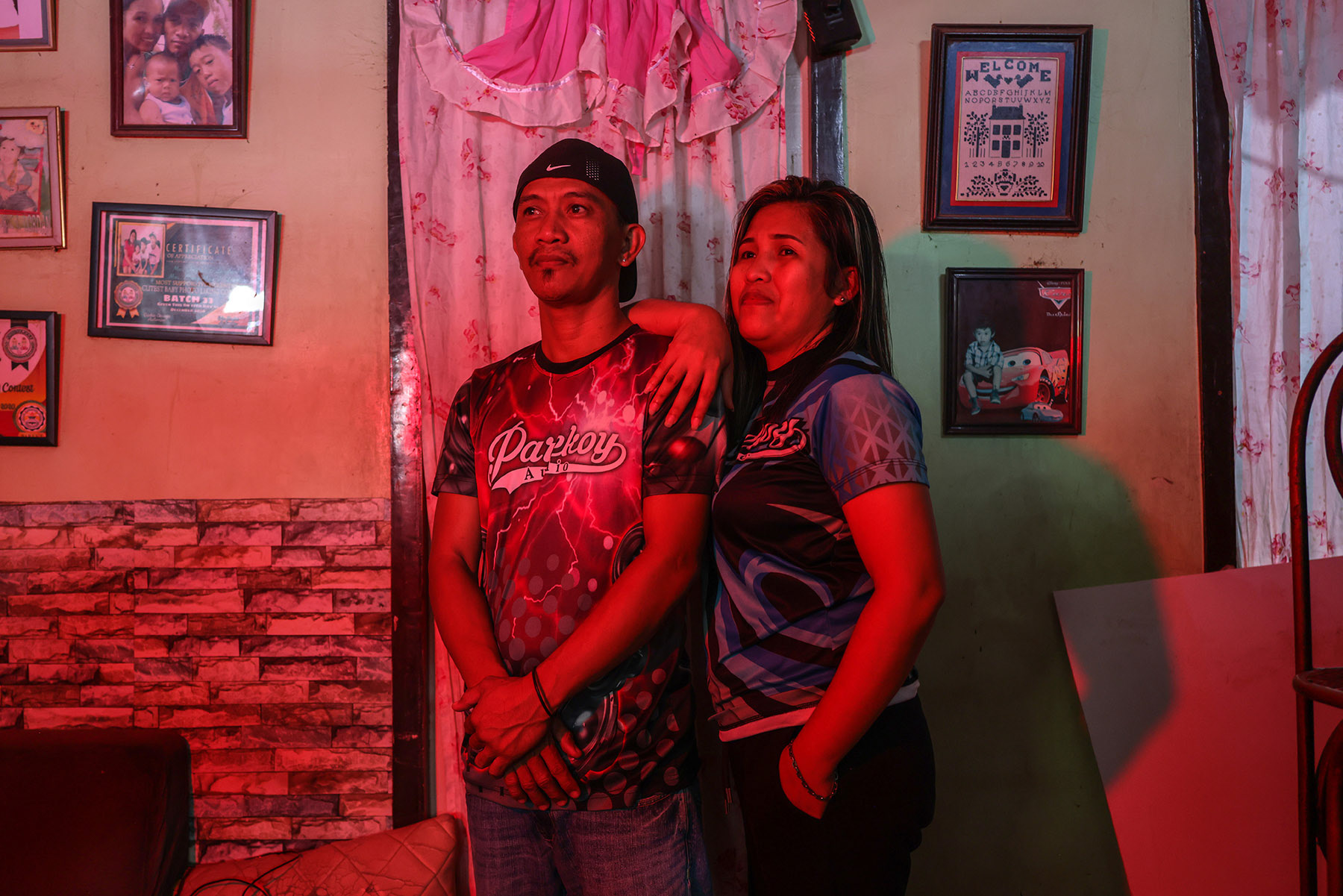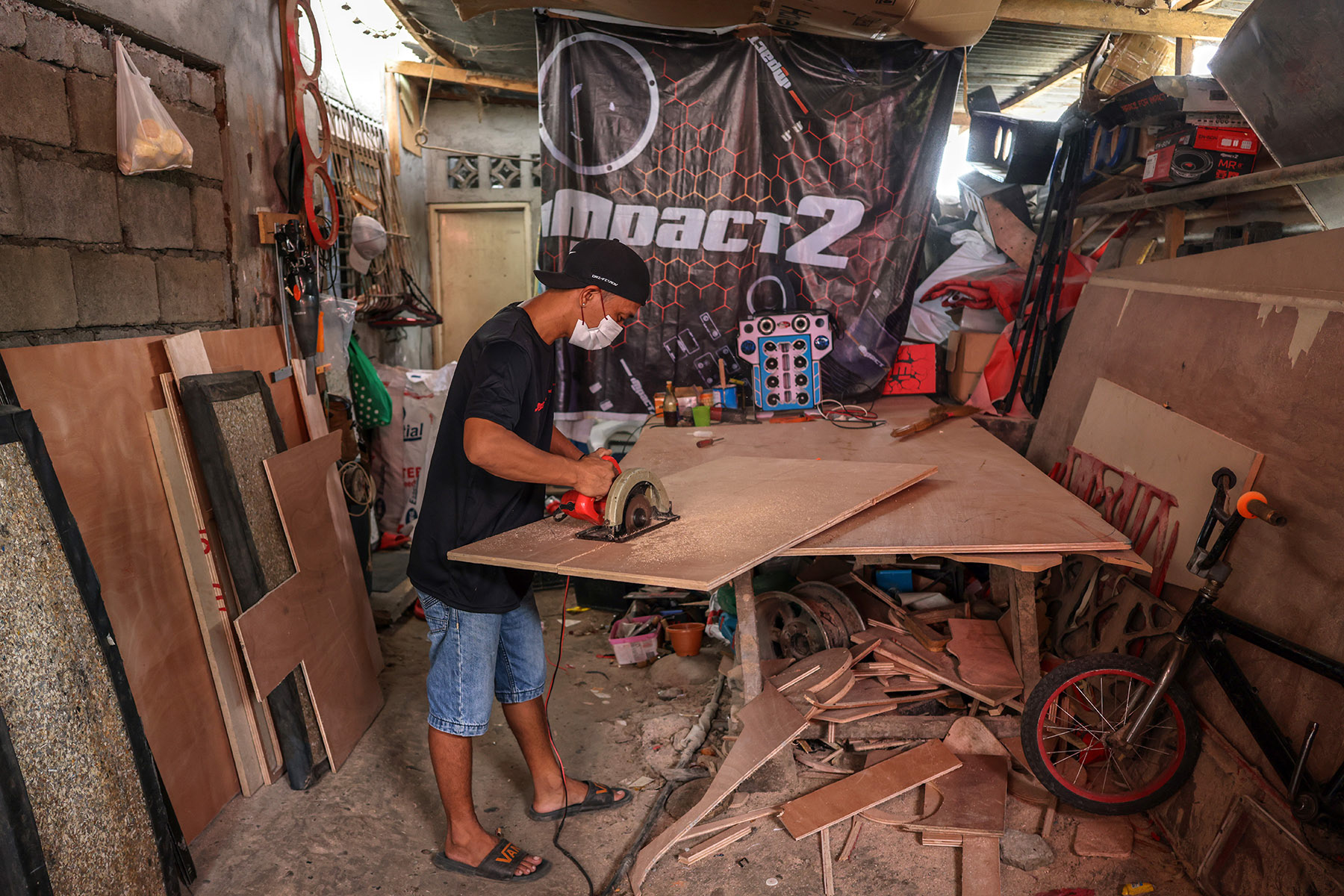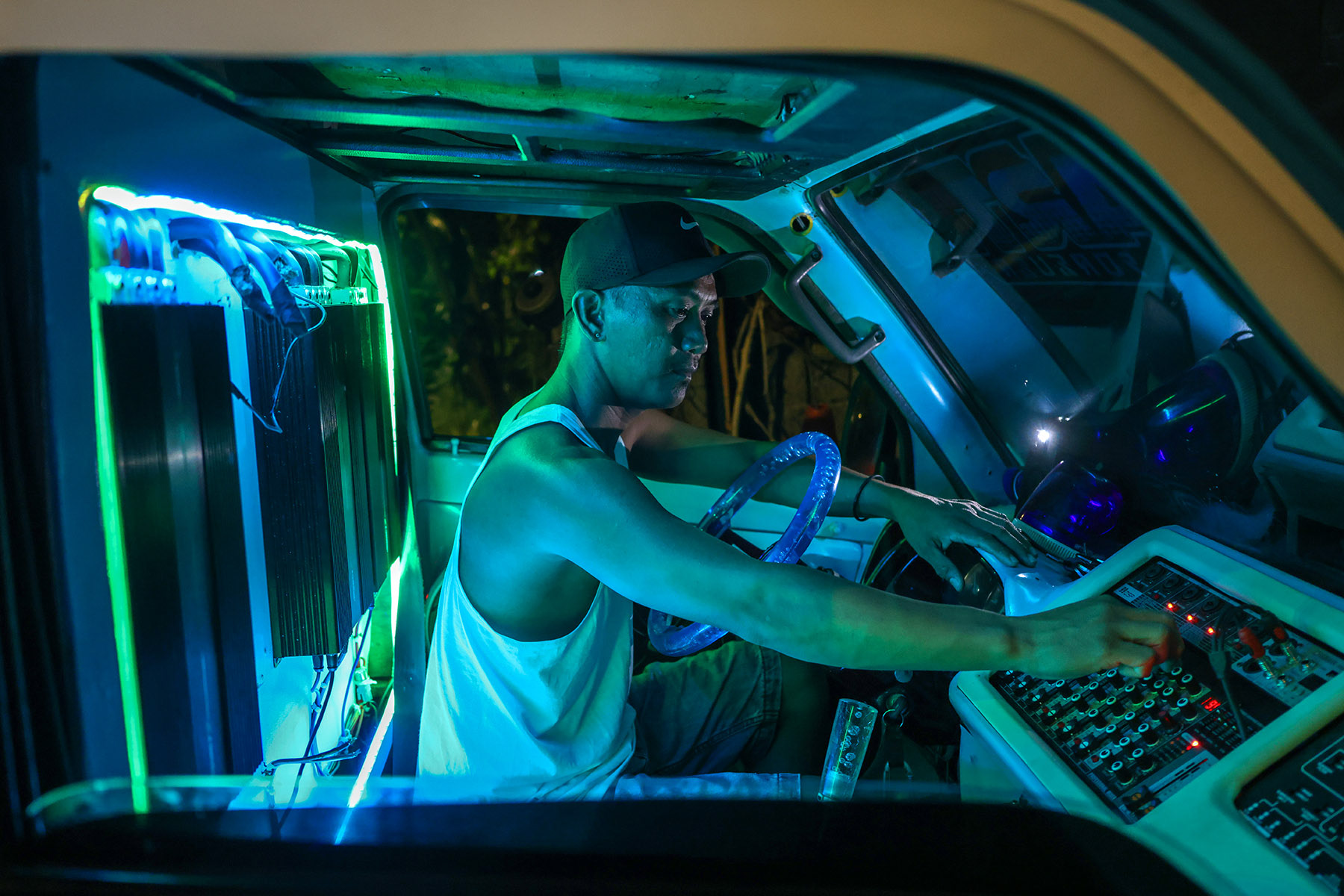We Dance to Survive
"Filipinos from young to old go wild on budots"
Tiew tiew – pap pap – dol dol! is the unique sound of dance music from the Philippine port city of Davao. On the streets, in eateries, and in parks, the infectious rhythm of 140 beats per minute resonates, with counterintuitive bass, high-pitched whistles, and nervous city sounds. This includes a slow dance, in flip-flops and shorts, with movements that are both cool and provocative. Thanks to YouTube, the stimulating techno music from the slums of Davao, called budots, is spreading to the nightclubs of Southeast Asia and, more recently, to Europe.
On the outskirts of Davao, Jason Lordan parks his pastel blue van with oversized speakers for a fiesta (neighborhood party). The man, who installs sound and lighting systems in cars and tricycles as a hobby, swings open his rear doors and, with the push of a button, transforms a dark street into a nightclub with 130 decibels of techno music and pulsating lights. Much to the delight of the residents, who gather swaying their hips for an evening of budots techno: teenage girls in tight tops, fathers bare-chested, grandmothers holding hands with toddlers.
On the outskirts of Davao, Jason Lordan parks his pastel blue van with oversized speakers for a fiesta (neighborhood party). The man, who installs sound and lighting systems in cars and tricycles as a hobby, swings open his rear doors and, with the push of a button, transforms a dark street into a nightclub with 130 decibels of techno music and pulsating lights. Much to the delight of the residents, who gather swaying their hips for an evening of budots techno: teenage girls in tight tops, fathers bare-chested, grandmothers holding hands with toddlers.





The sounds of the slums of the Philippine port city of Davao are reflected in the popular techno music style budot. "Fingers to my lips? That's like sniffing glue. Fingers to my temple? A pistol shot."
Sherwin Calumpang Tuna, known as DJ Love, composes new music in his home.


The origins of budot are remarkable: first came the dance, then the music. "My nephew was hanging out with gangsters, and I was worried about him and his friends," says 40-year-old Sherwin Calumpang Tuna, aka DJ Love, who claims—and many others do—to be the inventor of budot. In his moldy room in the Camus Extension slum, Tuna recounts how, in 2009, he invented an activity for the teenage boys hanging around his internet café.


Lady Maria, budot dancer and blogger, earns money through Facebook and YouTube.
The Camus Boys were joined by Camus Girls , such as 27-year-old Cristine Sayson, alias Lady Maria . "Budots make me happy," says the dancer and blogger, who now receives a modest monthly allowance through Facebook and YouTube. "My life has improved."


At the neighborhood party on the outskirts of Davao, sweaty dancers have been blocking the main road for hours. The crowd of twerking and meandering Filipinos occasionally makes way for a passing car or tricycle, which also invariably blasts loud budots music.
"This way, we forget our daily worries for a while," says 35-year-old Flory Mae Lordan, who has come along with her husband. In exchange for a meal, the couple happily sets up their mobile nightclub for a fiesta . "Budots is music by and for the poor. They dance because they're stressed, they dance to survive."
For de Volkskrant, With Noël van Bemmel: Read Here!
